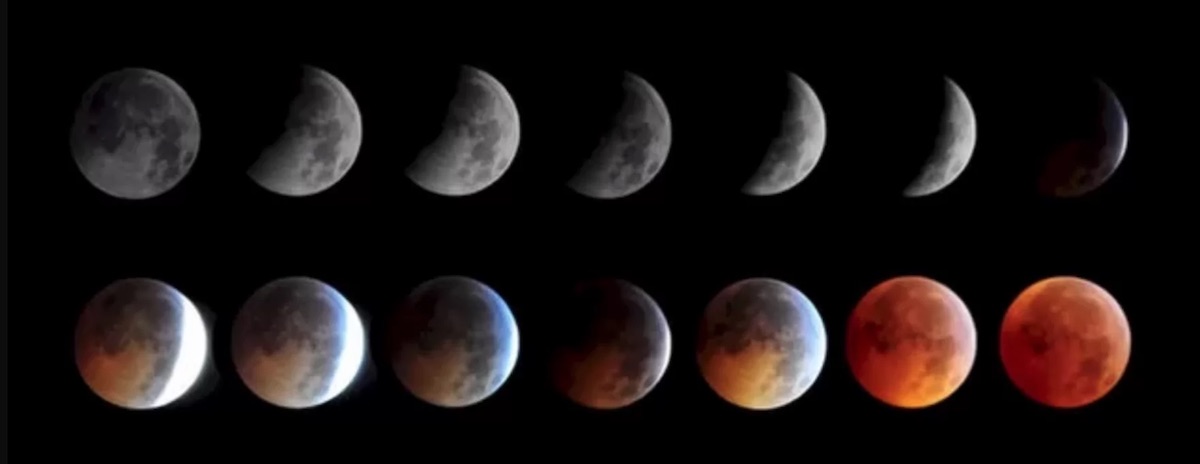
Credit: Keith Burns/NASA/JPL
The Lunar Eclipse on January 20, 2019, was visible across all of North and South America, and it was the last one until 2021! The full moon that night was a Blood Moon because the Moon turned a bright shade of reddish orange, like the colors of a sunset. The eclipse happens when the Moon enters the Earth’s shadow. Earth will block out most of the light we usually see on the Moon. It’s the Sun’s scattered light that produces the red color.
Other Fun Facts about the Moon:
- The Moon is more than 200,000 miles away from Earth, and it’s our closest neighbor in space and our only natural satellite.
- The strong gravitational pull of the Moon causes our ocean tides to rise and fall here on Earth. So although the Moon is only about a quarter of the size of Earth, it has a big influence on us!
- The shape of the Moon never changes. It appears to be different shapes (e.g., full or crescent) depending on its relative position to Earth and the Sun. When the Moon is on the opposite side of Earth from the Sun, the Sun illuminates the Moon’s surface so it appears to be full.
- If you were on the Moon, the Earth would appear to have phases! But they’re on an opposite schedule, so when it’s a New Moon for us, the Earth would appear to be fully illuminated to someone on the Moon.
- The Moon stabilizes the tilt of the Earth’s axis so it doesn’t wobble. Mars, on the other hand, has an axis that ranges more than 10 degrees, which causes climatic changes like having winter at the Equator.
- The lunar eclipse in January 2019 happened during a Super Moon, when the Moon is closest on its elliptical orbit around Earth.
- Here is a map of the eclipse to see how much of it was visible in your area: https://www.timeanddate.com/eclipse/map/2019-january-21
- To learn even more about the Moon, check out NASA.gov, NASA’s Jet Propulsion Laboratory and Space.com.
